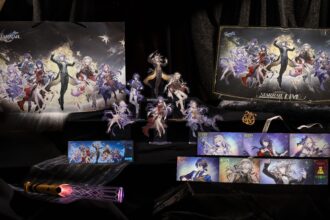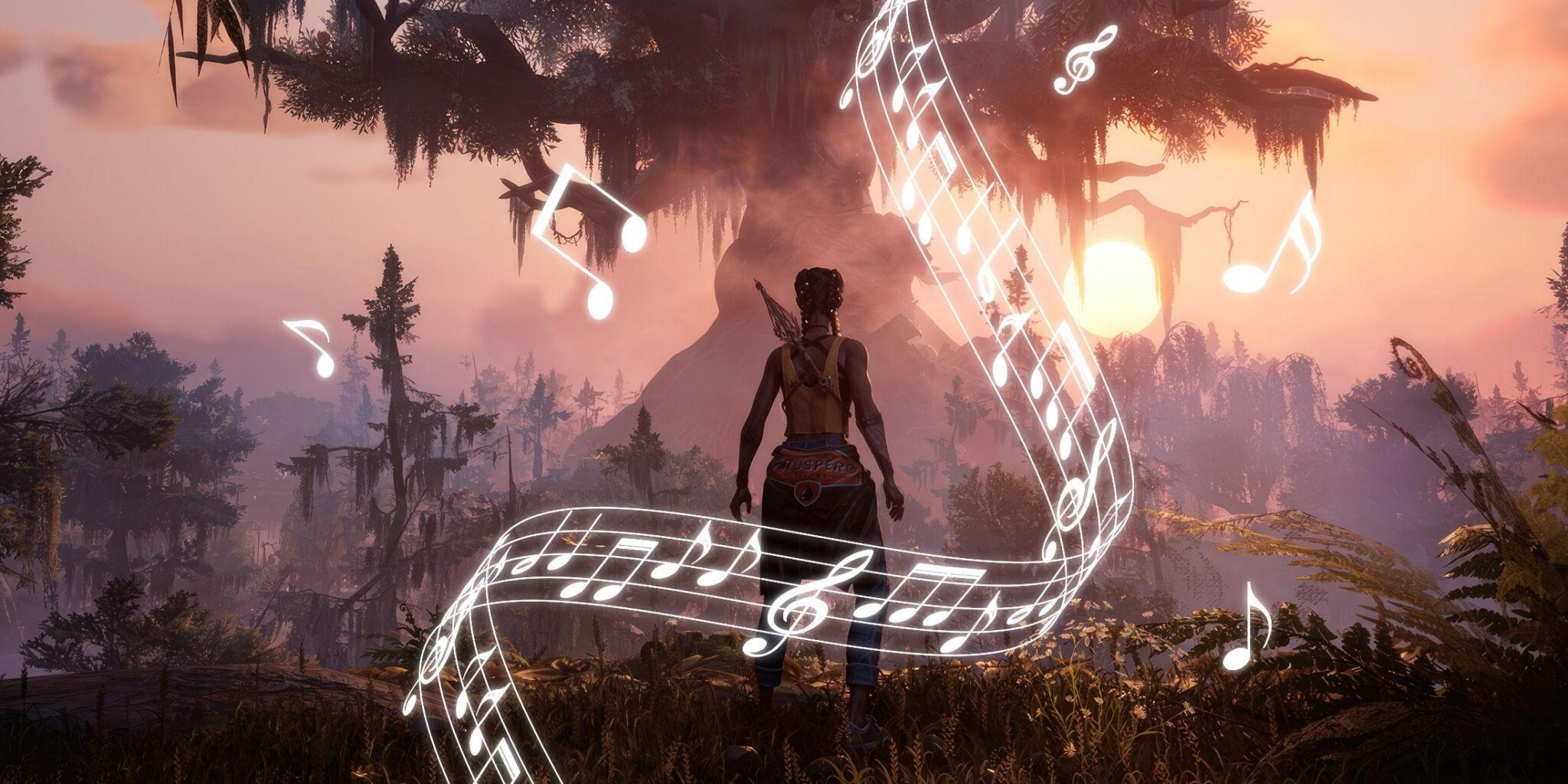In the world of gaming, music is often the unsung hero that elevates an already captivating experience to new heights. For Compulsion Games, the Canadian studios behind the critically acclaimed We Happy Few, their latest foray into the world of musical storytelling – South of Midnight – has been a harmonious labor of love. The game’s enchanting soundtrack is more than just a backdrop to the narrative; it’s a living, breathing entity that weaves in and out of the game’s very fabric, pulling players into its mesmerizing rhythm. But what happens when a game itself starts to ‘sing with the player’, intuitively adapting its melody to the user’s every move? We delve into the creative minds at Compulsion Games to explore the secrets behind South of Midnight’s incredible music, a symphony that harmoniously blends art, technology, and the beauty of the human experience.
Understanding the Vision Behind South of Midnights Music
The creative force behind South of Midnight’s music lies in its unique concept of “singing with the player.” This ideology places a strong emphasis on player agency and immersion, mirroring the emotional and psychological depth of the game’s narrative. To achieve this, the sound team deployed an innovative approach to music composition, which took into account the player’s actions and decisions throughout the game.
The power of South of Midnight’s music emanates from its distinct harmony of in-game aesthetics and dynamic audio design. The following key elements augmented this beautiful synergy:
-
Contextual Composition: The soundtrack intelligently adapts to various in-game situations, highlighting pivotal moments in the narrative and creating an overall enchanting experience.
-
Character Resonance: Each character in the game boasts a distinct sonic signature, subtly shaping the musical themes that evolve throughout the narrative.
-
Tonal Balancing: The sound design is delicately balanced between dialogue, background music, and environmental sounds, allowing players to engage with each element organically.
| Key Instruments Used | Acoustic Guitar, Piano, Orchestral Strings, Woodwind instruments |
|---|---|
| Musical Themes | Exploration, Solitude, Triumph, Melancholy |
By beautifully integrating these facets into the music composition, the sound team crafted a truly formidable audio experience for South of Midnight.

Crafting a Unique Soundtrack with Vintage Flair
Compulsion Games’ approach to creating the soundtrack for South of Midnight was rooted in blending nostalgic melodies with a touch of modernity. To achieve this distinctive sound, the team turned to analog synthesizers and acoustic instruments, infusing the game’s atmosphere with a retro-futuristic feel. By manipulating the sonic textures of their equipment, the sound designers crafted an inventive soundtrack that warps the boundaries of vintage charm and contemporary music
A few carefully selected elements contributed to the unique sonic tapestry of South of Midnight’s score:
- Canted jazz elements bringing a sense of disjointed memories
- Orchestral arrangements combining traditional and electronic tools
- Seamless genre-bending, marrying swing, and post-electronic elements
- Meticulously designed piano pieces which provide players with a glimpse into their protagonist’s fragile world
The aim was to develop an instantly recognizable audio identity, something that would immerse players and make memories of their own alongside the game’s characters. Crafting the perfect complement of nostalgia-tinged, evocative sounds allowed the soundtrack to express itself with a dramatic flair, echoing both wonder and vulnerability.
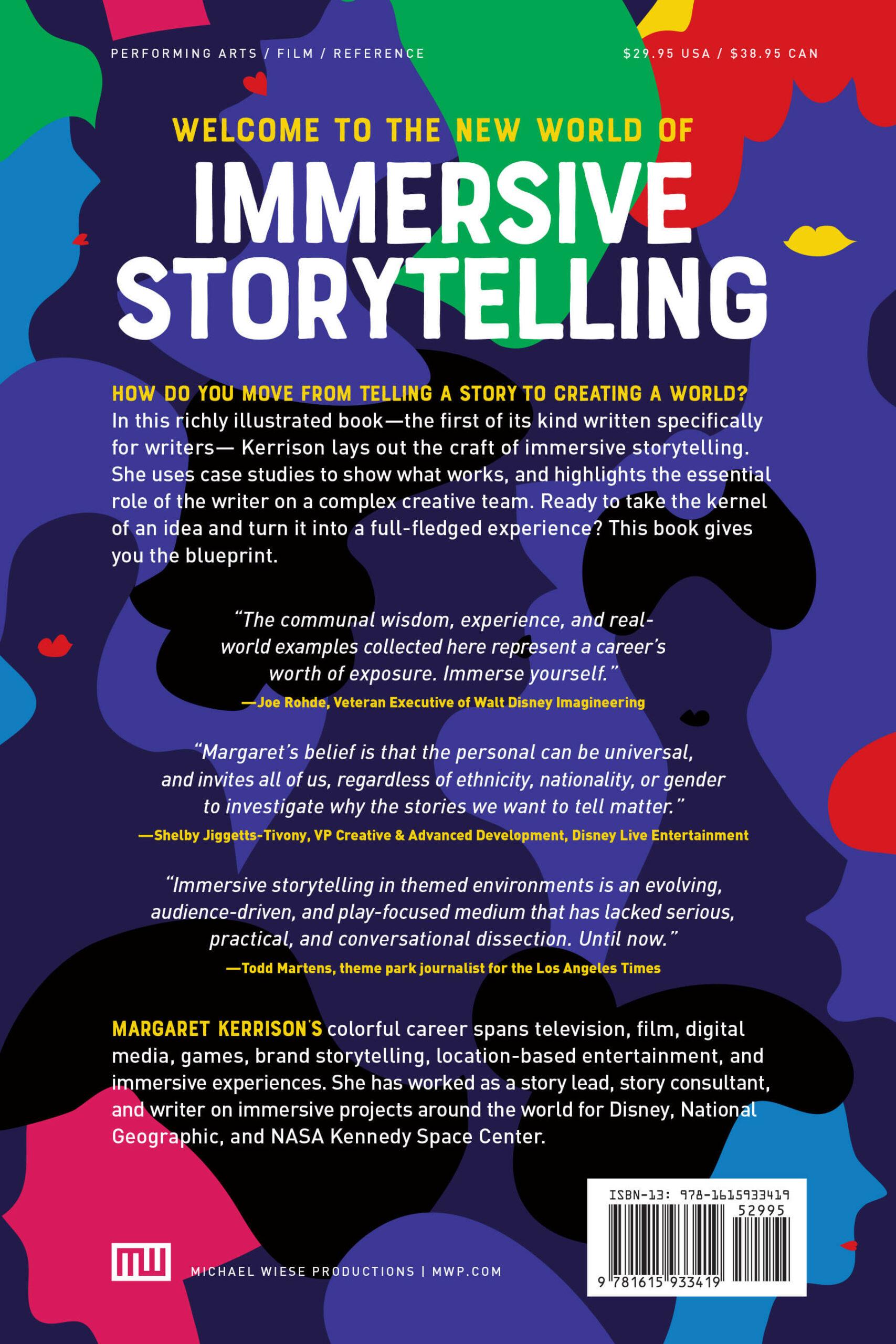
The Art of Adaptive Scores in Immersive Storytelling
Dynamic soundtracks have revolutionized the world of immersive storytelling, allowing scores to seamlessly adapt to the player’s emotions and actions. This synergy between music and gameplay has elevated the medium to unprecedented heights, as seen in Compulsion Games’ groundbreaking title, South of Midnight. By utilizing adaptive scoring techniques, the game’s soundtrack responds to the player’s journey, conjuring a deeply personal and captivating experience.
| Adaptive Scoring Techniques | Description |
| Interactive Themes | Dynamic themes that evolve with the player’s actions and emotions |
| Real-time Composing | Music composition that adapts to the player’s progress and gameplay style |
By incorporating these techniques, South of Midnight’s score has become an integral part of the gaming experience, responding to the player’s journey and creating a rich, immersive world that resonates deeply with gamers. In-game music transitions are also seamless, with the score effortlessly shifting between different emotional states to match the on-screen action. Some notable examples of this include:
- Haunting melodies that accompany the player through eerie environments
- Sweeping orchestral pieces that heighten the sense of exploration and discovery
- Tense, atmospheric soundscapes that amplify the game’s most pivotal moments
These masterful uses of adaptive scoring have set a new benchmark for immersive storytelling in games, leaving a lasting impact on the medium as a whole.
Creating Emotional Resonance through Sonic Landscapes
Sound is a profoundly personal experience, one that can evoke emotions and memories with remarkable precision. In the context of game development, sonic landscapes are more than just background scores or sound effects – they’re a crucial aspect of the overall gaming experience. Music has the power to transport players to different worlds, evoke empathy, and create strong emotional connections.
Compulsion Games’ approach to crafting South of Midnight’s soundtrack was centered around this very idea. By creating a soundscape that was both deeply personal and yet universally relatable, the team aimed to make players feel like they were part of a larger narrative – one that echoed their own experiences and emotions. Some key takeaways from this approach include:
- Experimentation with unconventional instruments, such as the theremin or the musical saw, to create unique sound textures.
- Emphasis on melody and harmony to craft memorable themes and motifs that players could latch onto.
- Dynamic soundscapes that adapted to the player’s progress, emotions, and actions.
| Sound Design Element | Emotion/Atmosphere Created |
| — | — |
| Distorted, industrial sounds | Tension, unease |
| Soft, ambient pads | Serenity, contemplation |
| Haunting, wordless vocals | Longing, nostalgia |
By carefully balancing these sonic elements, Compulsion Games was able to create a soundscape that not only complemented the gameplay but also elevated the overall narrative to new heights.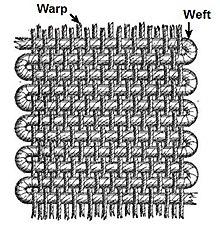
Weaving Player Interactions into Musical Narratives
Weaving player interactions into the musical narrative of South of Midnight was a delicate yet crucial process. Compulsion Games’ approach was multifaceted, taking into account various elements that contribute to an immersive experience. Player choice and agency played a significant role in this process, allowing players to feel like their decisions were influencing the narrative. For example:
- Players could engage in conversations with NPCs, influencing the tone and progression of the story.
- Traversal and exploration allowed players to discover new melodies and harmonies, adding depth to the narrative.
- Puzzle-solving enabled players to unlock new musical pieces, unlocking new paths forward in the narrative.
Another essential aspect of weaving player interactions into the musical narrative was the incorporation of dynamic audio elements. This involved using various techniques such as:
| Technique | Description |
|---|---|
| Layering | Layering different melodies and harmonies to create a rich, immersive experience. |
| Stutter editing | Using stutter editing techniques to create a sense of tension and unease. |
| Dynamic range compression | Using dynamic range compression to balance the audio levels and create a cohesive experience. |
By incorporating these techniques, Compulsion Games was able to craft a musical narrative that not only complemented the gameplay but also actively responded to the player’s actions.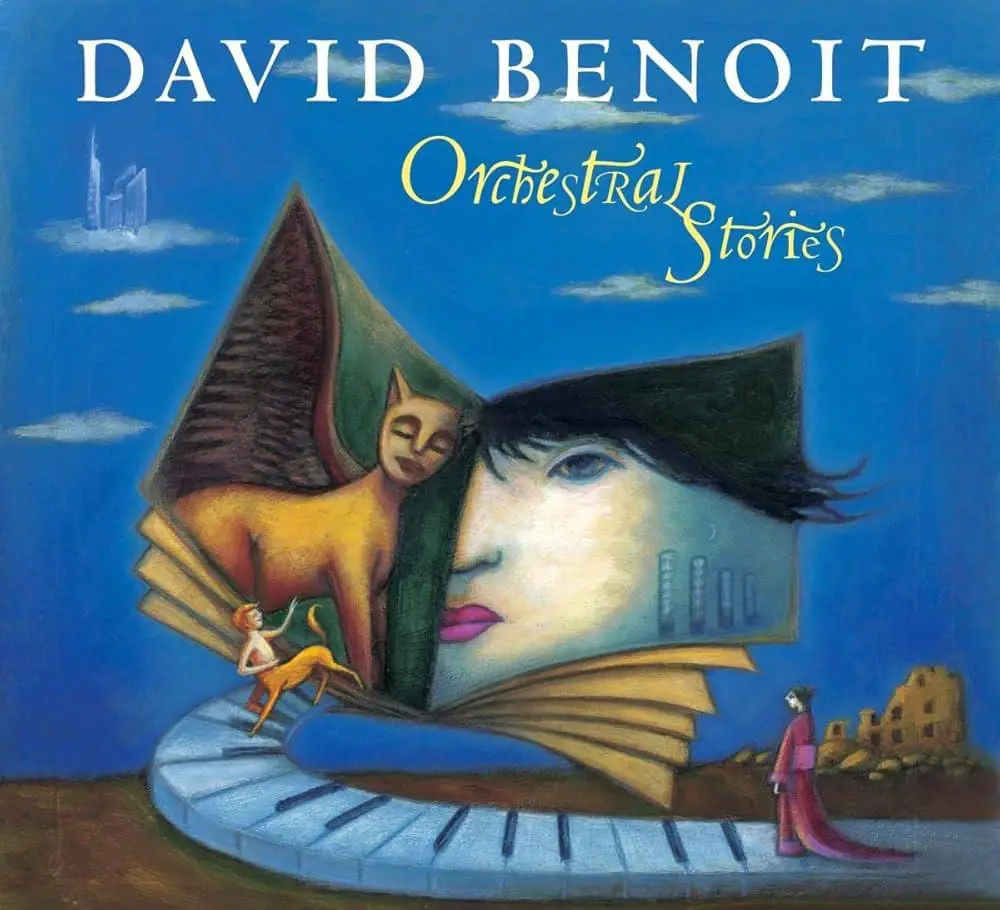
Orchestral Storytelling Behind the Games Score
Score composition is a vital part of a game’s narrative DNA. In the case of South of Midnight, Compulsion Games sought to craft an sonic identity that would resonate deeply with players. Music Director, Lena Raine, talks about how the team experimented with a range of styles and instruments to find the perfect harmonious voice for the game’s world.
The score ebbs and flows with the game’s emotional landscape, masterfully weaving together contrasting elements to create a unique aural tapestry. As a testament to the game’s eclectic sound design, take a look at the instruments used in its score:
| Orchestral Strings |
| Piano, Harpsichord and Celesta |
| Jazz-inspired Horns and Woodwinds |
| Folk-inspired Acoustic Guitar and Perussion |
| Electronic Sound Design Elements |
This carefully considered arrangement of sounds adds depth, texture, and atmosphere to the game’s narrative moments – further elevating the overall player experience. Ultimately, South of Midnight’s score becomes an enduring, emotive storytelling companion that perfectly complements the game’s unfolding drama.

Building a Sonic Identity for South of Midnight
When thinking about the sonic identity of South of Midnight, the team knew they wanted to create an atmosphere that not only reflected the mysterious and mystical ambiance of the game but also complimented the emotions and actions of the player. Immersion and emotional connection were key. To achieve this, they carefully crafted a soundscape that would mimic the depths of human emotion, taking into consideration everything from orchestral arrangements to ambient noises.
The result was a soundscape that lived and breathed alongside the player, reacting and responding to every moment in a way that felt both organic and hypnotic. To illustrate this synergy, the audio designers drew upon a range of unusual inspirations, including:
- Folk instrumentation, such as the harp and flutes, to add a timeless and earthy feel
- Atmospheric manipulations of choral vocals, highlighting the sense of the unknown
- Perilous ambience, crafted from unsettling creaks and groans, to conjure unease
- Tonal harmonies, imbued with an almost mystical essence to underscore key moments
| Instrument | Influenced by |
|---|---|
| Harp | Celtic folk |
| Choral Vocals | Renaissance music |

A Collaborative Approach to Music Composition
Compulsion Games’ innovative approach to music composition in South of Midnight is a testament to the power of collaboration. By involving the development team in the creative process, the game’s score was shaped by a diverse array of perspectives and ideas. This approach allowed the game’s music to evolve organically, reflecting the game’s narrative and tone.
The benefits of this collaborative approach can be seen in several key areas:
- Improved pacing: The development team’s input helped ensure the music perfectly complemented the gameplay, heightening the sense of tension and excitement.
- Deeper emotional resonance: By incorporating the team’s personal experiences and emotions, the score gained a depth and authenticity that resonates with players.
- Better thematic integration**: The collaborative approach allowed the team to weave recurring themes and motifs throughout the game’s narrative, creating a sense of cohesion and consistency.
| Key Benefits of Collaboration | Outcomes |
|---|---|
| Developer input on music placement | More effective use of music to enhance gameplay |
| Sharing of personal experiences | More authentic, emotionally resonant music |
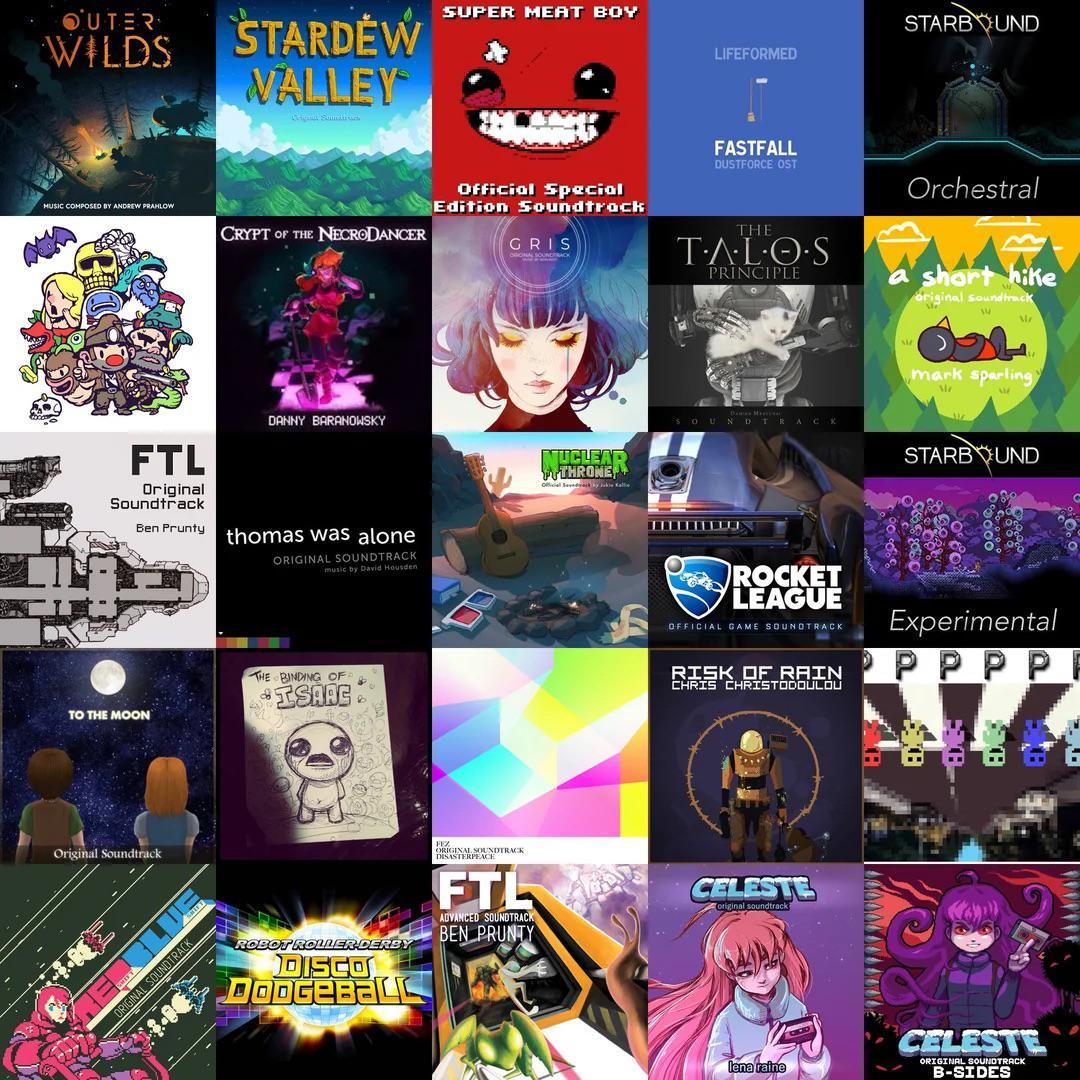
Finding Inspiration in Classic Video Game Soundtracks
Let’s take a trip down memory lane and explore how classic video game soundtracks have always managed to evoke a sense of nostalgia and wonder in gamers. From the iconic Super Mario Bros. Ground Theme to The Legend of Zelda’s majestic Hyrule Field, these soundtracks have not only become an integral part of our gaming culture but also serve as a rich source of inspiration for contemporary game developers.
In a world where music plays a pivotal role in setting the tone and atmosphere of a gaming experience, the following classic video game soundtracks continue to influence and captivate audiences to this day:
- Final Fantasy VI – ‘Aria di Mezzo Carattere’ – A poignant and emotive opera piece that has solidified its place as one of the most iconic video game themes of all time.
- Castlevania – ‘ Bloody Tears’ – A hauntingly beautiful melody that effectively captures the essence of the Gothic-horror genre.
- Chrono Trigger – ‘Schala’s Theme’ – A mesmerizing and ethereal track that masterfully tells the tale of a timeless love story.
| Soundtrack | Game Title | Release Year |
|---|---|---|
| Super Mario Bros. | Super Mario Bros. | 1985 |
| The Legend of Zelda | The Legend of Zelda | 1986 |
| FFVI – ‘Aria di Mezzo Carattere’ | Final Fantasy VI | 1994 |
These classic video game soundtracks serve as a testament to the indelible mark they’ve left on the world of gaming, while their timeless appeal continues to mesmerize audiences across the globe.
In Retrospect
As the curtains close on this enchanting exploration of South of Midnight’s resounding soundtrack, one thing remains certain: Compulsion Games’ harmonious marriage of music and gameplay has given birth to a true masterpiece. The layers of emotion, the stirrings of the soul, and the symphony of sentiment woven into every note have created an auditory tapestry that not only complements the game but elevates it to new heights. And so, we bid farewell to this melodic journey, the echoes of which will continue to resonate within us, a haunting reminder of the magic that happens when sound and gameplay are expertly intertwined. As the melody fades into the distance, we’re left with a question: what harmony awaits in the next great symphony of sound?


